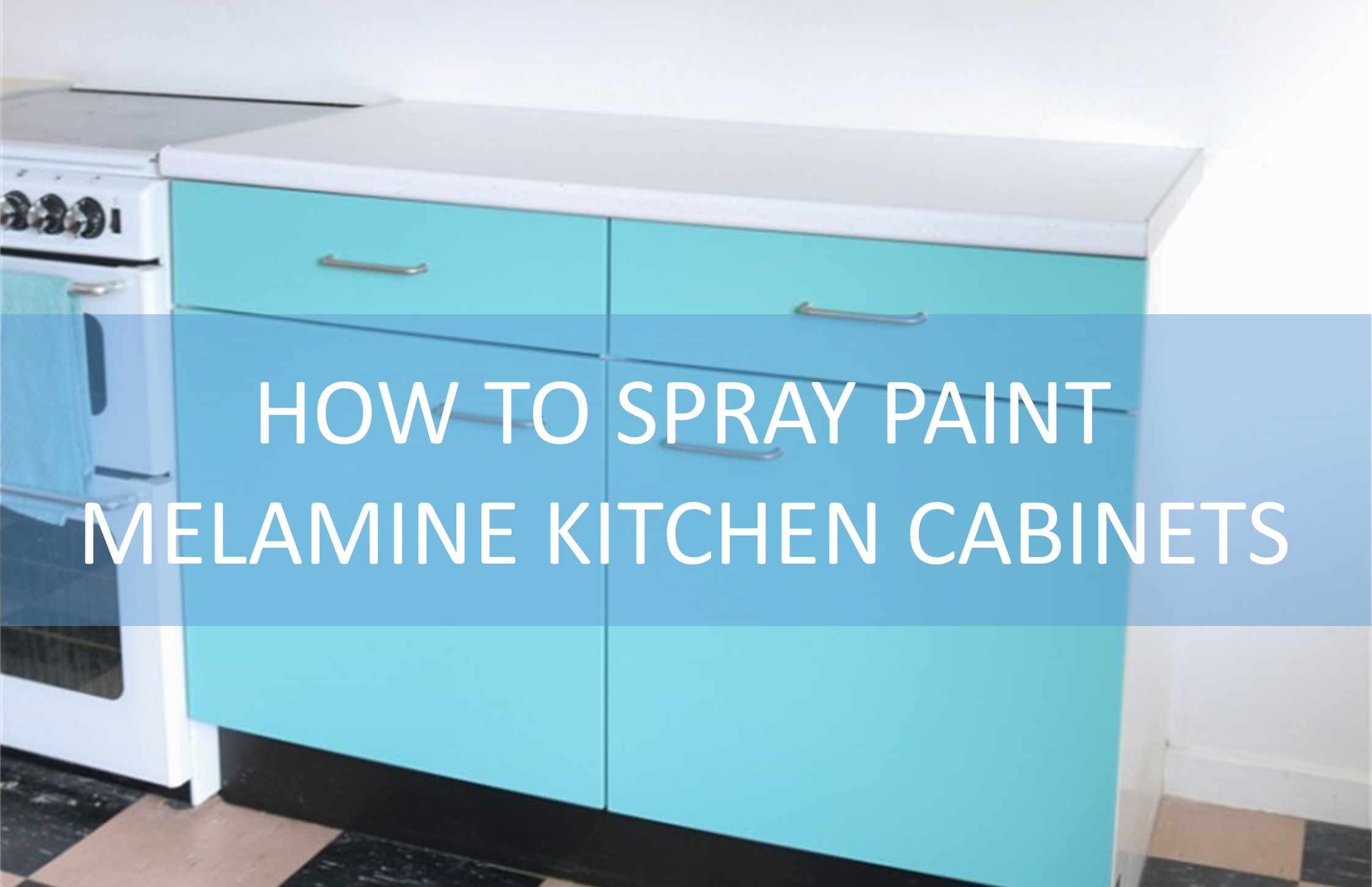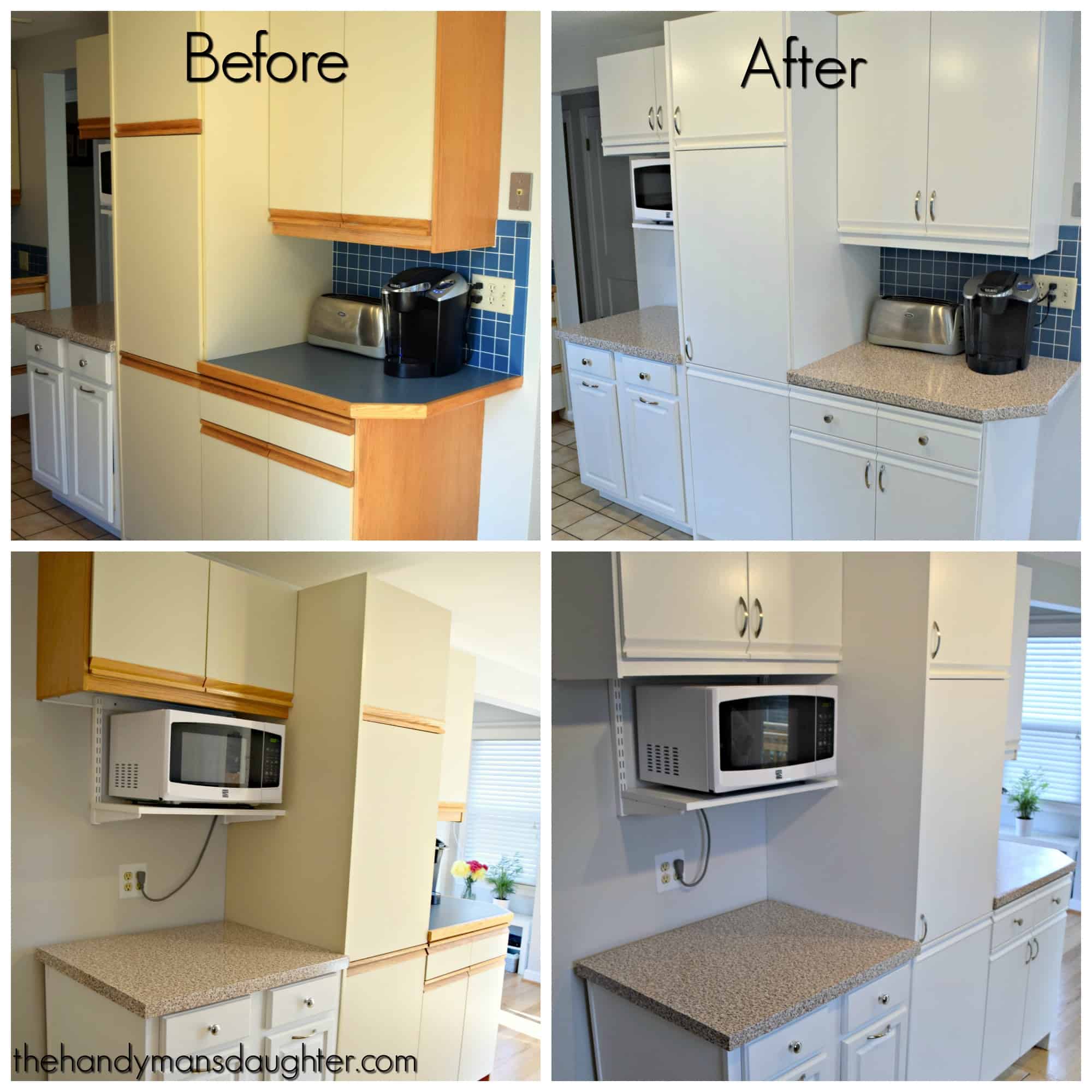Preparing Melamine Cabinets for Painting

Melamine cabinets, known for their durability and affordability, can be easily transformed with a fresh coat of paint. However, proper preparation is crucial for achieving a smooth, long-lasting finish. This involves thoroughly cleaning the cabinets to remove any dirt, grease, or residue, and sanding to create a surface that adheres well to the paint.
Cleaning Melamine Cabinets
Before applying any paint, it is essential to clean the melamine cabinets thoroughly. This removes any dirt, grease, or residue that may interfere with the paint’s adhesion.
- Start by removing any hardware, such as knobs, handles, or hinges. This allows for easier access to all surfaces and prevents damage during the cleaning process.
- Use a mild detergent and warm water to clean the cabinets. Avoid harsh chemicals or abrasive cleaners, as these can damage the melamine surface. A solution of dish soap and water is often sufficient.
- Apply the cleaning solution with a soft cloth, wiping gently in a circular motion. Pay attention to any corners or crevices where dirt may accumulate.
- Rinse the cabinets thoroughly with clean water to remove all traces of detergent. Allow the cabinets to dry completely before proceeding to the next step.
Sanding Melamine Cabinets
Sanding is a crucial step in preparing melamine cabinets for painting. It helps create a smooth surface that allows the paint to adhere properly and prevents the paint from chipping or peeling.
- Use fine-grit sandpaper, typically 120-grit or higher, for sanding melamine surfaces. This will create a smooth finish without damaging the melamine.
- Sand the cabinets lightly, focusing on any rough areas or imperfections. The goal is to create a uniform surface, not to remove any significant amount of material.
- Sand with the grain of the melamine to avoid scratches or swirl marks.
- Wipe the cabinets with a tack cloth to remove any sanding dust before painting.
Sanding Techniques
There are different sanding techniques that can be used for preparing melamine cabinets for painting. Each technique has its own advantages and disadvantages.
| Sanding Technique | Pros | Cons |
|---|---|---|
| Hand Sanding | Cost-effective, provides control over the sanding process | Time-consuming, can be physically demanding |
| Orbital Sander | Faster than hand sanding, provides a more uniform finish | Can create swirl marks if not used properly, more expensive than hand sanding |
| Random Orbit Sander | Produces a very smooth finish, reduces the risk of swirl marks | More expensive than orbital sanders, can be difficult to control |
Choosing the Right Paint for Melamine Cabinets

Painting melamine cabinets requires careful consideration of the paint type to ensure a durable and aesthetically pleasing finish. The right paint will adhere well, resist chipping and scratches, and enhance the overall look of your cabinets.
Acrylic Latex Paint
Acrylic latex paint is a popular choice for painting melamine cabinets due to its ease of application, quick drying time, and water-based formula.
- Advantages: Acrylic latex paint is known for its durability, good adhesion to melamine surfaces, and ability to create a smooth, even finish. It is also low in VOCs, making it a more environmentally friendly option.
- Disadvantages: Acrylic latex paint may not be as durable as enamel paint, especially in high-traffic areas. It can also be susceptible to yellowing over time, particularly in areas exposed to direct sunlight.
Enamel Paint
Enamel paint is a durable option for painting melamine cabinets, known for its hard, glossy finish.
- Advantages: Enamel paint offers excellent durability, making it ideal for high-traffic areas like kitchens and bathrooms. It is also resistant to moisture, stains, and scratches, ensuring a long-lasting finish.
- Disadvantages: Enamel paint can be more difficult to apply than acrylic latex paint, requiring careful preparation and application techniques. It is also typically oil-based, which means it has a longer drying time and emits stronger fumes.
Specialty Paints, How to paint white melamine cabinets
Specialty paints specifically designed for melamine surfaces offer enhanced adhesion and durability. These paints are formulated to bond well with the smooth, non-porous surface of melamine.
- Advantages: Specialty paints provide excellent adhesion, durability, and resistance to scratches and chipping. They often contain additives that enhance their performance and make them suitable for melamine surfaces.
- Disadvantages: Specialty paints may be more expensive than traditional acrylic latex or enamel paints. They may also have a limited color selection.
Primer for Melamine Cabinets
Applying a primer to melamine cabinets is crucial for creating a smooth, even surface and improving paint adhesion.
- Importance: Primer helps to create a bonding layer between the paint and the melamine surface, ensuring a durable and long-lasting finish. It also helps to hide any imperfections in the melamine surface, such as scratches or unevenness.
- Suitable Primer Options: Choose a primer specifically designed for melamine surfaces. Look for primers that are oil-based or acrylic-based, depending on the type of paint you plan to use.
Paint Brands and Products for Melamine Surfaces
Several paint brands offer products specifically designed for painting melamine surfaces.
- Examples: Rust-Oleum, Krylon, and Zinsser are well-known brands that offer melamine-specific paints and primers. Look for products labeled as “melamine-friendly” or “for cabinets and furniture.”
Selecting the Right Paint Color and Sheen
Choosing the right paint color and sheen is essential for achieving the desired look for your melamine cabinets.
- Color: Consider the overall style of your kitchen or bathroom and choose a color that complements the existing décor. Popular choices for melamine cabinets include white, gray, black, and beige.
- Sheen: The sheen of the paint affects its appearance and durability. Matte finishes provide a subtle, low-sheen look and are ideal for hiding imperfections. Semi-gloss finishes offer a slightly more reflective look and are more durable, making them suitable for high-traffic areas. Glossy finishes are highly reflective and create a polished, modern look.
Painting Melamine Cabinets: How To Paint White Melamine Cabinets

Painting melamine cabinets can be a great way to refresh your kitchen or bathroom without a complete remodel. Melamine is a durable, smooth surface, but it can be challenging to paint due to its non-porous nature. However, with the right preparation and techniques, you can achieve a professional-looking finish that will last for years.
Applying Paint to Melamine Cabinets
The application method you choose will depend on the size and complexity of your cabinets. For smaller projects, a brush or roller may be sufficient. However, for larger projects or those with intricate details, a sprayer may be the best option.
- Brushes: Use a high-quality brush with synthetic bristles, which are better suited for smooth surfaces like melamine. Apply thin coats of paint with smooth, even strokes, working in the direction of the wood grain.
- Rollers: For larger areas, a roller is a more efficient option. Use a high-quality roller cover with a nap length appropriate for the surface you’re painting. Apply paint in thin, even coats, working in sections to avoid roller marks.
- Sprayers: Sprayers offer the most even coverage and can significantly reduce drying time. However, they require careful preparation and technique to avoid overspray and runs. Use a high-quality paint sprayer designed for water-based paints and follow the manufacturer’s instructions for proper setup and use.
Drying Times and Multiple Coats
Allow each coat of paint to dry completely before applying the next. Drying times vary depending on the type of paint, temperature, and humidity. Most paints require at least two coats for optimal coverage and durability.
- Drying Times: Check the paint manufacturer’s instructions for specific drying times. Typically, water-based paints dry to the touch within 30 minutes to an hour, but may require 24 hours for full cure.
- Multiple Coats: Apply a second coat of paint after the first coat has dried completely. This will ensure even coverage and enhance the durability of the finish.
Achieving a Smooth and Even Finish
The key to a smooth and even paint finish is proper preparation and application. Here are some tips:
- Sanding: Lightly sand the melamine surface with fine-grit sandpaper to create a tooth for the paint to adhere to. This will help prevent peeling and chipping.
- Priming: Apply a primer specifically designed for melamine surfaces. This will create a barrier between the melamine and the paint, promoting adhesion and preventing the paint from yellowing over time.
- Thin Coats: Apply thin coats of paint, allowing each coat to dry completely before applying the next. This will prevent runs and drips and ensure even coverage.
- Smooth Strokes: Use smooth, even strokes when applying paint with a brush or roller. Avoid going over the same area multiple times, as this can cause brush marks or roller streaks.
Addressing Common Painting Challenges
Painting melamine cabinets can present some challenges, but with proper techniques and troubleshooting, you can achieve a professional-looking finish.
- Drips and Runs: To avoid drips and runs, apply thin coats of paint and allow each coat to dry completely before applying the next. If drips or runs do occur, use a damp cloth to wipe them away before the paint dries completely.
- Uneven Coverage: Uneven coverage can be caused by insufficient sanding, inadequate priming, or applying too thick coats of paint. Ensure the melamine surface is properly sanded and primed before applying paint. Use thin coats and allow each coat to dry completely before applying the next.
- Brush Marks and Roller Streaks: Brush marks and roller streaks can be caused by using an incorrect brush or roller, applying paint too thickly, or going over the same area multiple times. Use a high-quality brush or roller with a nap length appropriate for the surface you’re painting. Apply thin coats and use smooth, even strokes.
Essential Painting Supplies and Tools
Here is a list of essential painting supplies and tools you’ll need for this project:
- Paint: Choose a high-quality paint specifically designed for melamine surfaces.
- Primer: Use a primer specifically designed for melamine surfaces.
- Sandpaper: Use fine-grit sandpaper to lightly sand the melamine surface.
- Paint Brush: Use a high-quality brush with synthetic bristles for smooth surfaces.
- Paint Roller: Use a high-quality roller cover with a nap length appropriate for the surface you’re painting.
- Paint Tray: Use a paint tray to hold the paint and make it easier to apply.
- Paint Thinner: Use paint thinner to clean brushes, rollers, and other painting tools.
- Drop Cloth: Use a drop cloth to protect the floor and surrounding areas from paint splatters.
- Painter’s Tape: Use painter’s tape to protect areas that you don’t want to paint.
- Safety Glasses: Wear safety glasses to protect your eyes from paint splatters.
- Gloves: Wear gloves to protect your hands from paint.
How to paint white melamine cabinets – Painting white melamine cabinets requires careful preparation, as the smooth surface can make paint adhesion tricky. Achieving a flawless finish often involves sanding the surface to create a more porous texture for the paint to adhere to. This process is similar to how a feng shui practitioner might consider the placement of furniture in a bedroom with two doors, optimizing the flow of energy and creating a harmonious balance.
Just as the placement of furniture affects the energy flow in a bedroom, the preparation of the melamine surface affects the final paint application, ensuring a smooth and long-lasting finish.
Painting white melamine cabinets requires proper preparation, including cleaning and sanding the surface to ensure optimal paint adhesion. While preparing your cabinets, it’s important to consider security measures for your home. For instance, you might want to learn how to lock your bedroom door from the outside, which can be done with a variety of methods , depending on your door type and hardware.
Once you’ve addressed security concerns, you can proceed with painting your cabinets, ensuring a smooth and even finish with a high-quality primer and paint.
